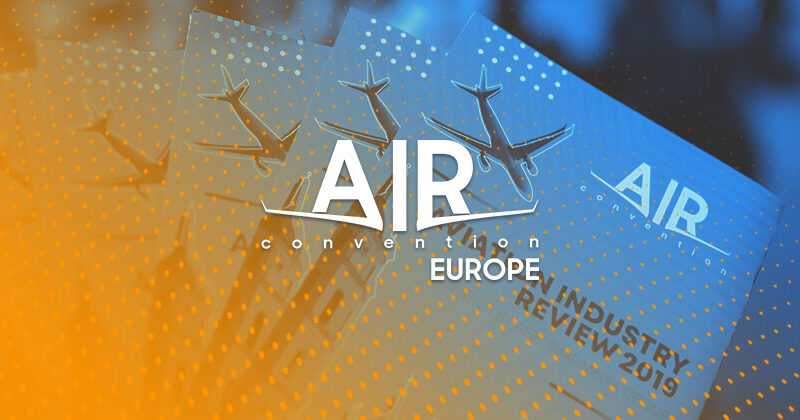The rapid rise in global demand for air travel combined with the emergence of low-cost carriers have led to an unprecedented and solid growth of the aircraft ACMI leasing market in recent years, particularly within Europe. Today, the ACMI providers offer solutions in capacity management for leading scheduled and charter airlines. And the market shows no signs of stopping. Once considered as a quick fix for short-term capacity issues, such as seasonality, maintenance checks or groundings, long-term ACMI leasing from third parties has also gained momentum.
Aircraft ACMI leasing market: challenges and opportunities
Airlines face the risk of operational disruption on a daily basis, whether due to industrial action, aircraft groundings, late deliveries, incidents on ground or in the air, or other unprecedented circumstances. As such, capacity requirements can change at a moment’s notice. Aside of immediate capacity requirements, operators also need to be able to fill in additional capacity long-term, such as in the case of seasonal highs and lows or when testing out new markets and routes. While operational disruptions cannot always be foreseen, contrary to planning ahead for seasonal peaks and new routes, ACMI (aircraft, crew, maintenance, and insurance) or the “wet lease” of an aircraft provides a solution to both immediate and long-term capacity requirements (short-term wet-lease deals are defined as shorter than 61 days, long term – 61 days and longer).
The recent growth of the ACMI market correlates with the challenges facing the airline industry, including those affecting operations, capacity and the airline business. For airlines, as Edvinas Demenius, VP of Business Development, SmartLynx Airlines, outlines, these challenges comprise late aircraft deliveries, as aircraft manufacturers struggle to keep up with yearly production targets; design flaws, such as engine issues plaguing the Airbus A320neo; aircraft groundings, with the ongoing Boeing 737 MAX crisis currently weighing heavily on the aviation industry; and airline bankruptcies, a painful topic in the context of European airline industry, which has seen a troubling number of airline collapses in 2018-2019, as exemplified by the case of Monarch Airlines, Primera Air and others.
Airlines must also be prepared for market challenges, including rising maintenance costs, crew shortage and unionization that increasingly threaten flight operations, aircraft financing costs, whether for leases or new deliveries, as well as the cost associated with the EU261 flight compensation regulation. And finally – capacity challenges, arising from increasing market competitiveness, overcapacity, high fuel prices and a common headache – seasonal impact (airlines can earn between 20-40% profit in the summer period versus a 10-20% loss in the winter season). According to Demenius, ACMI provides the only way out.
The business model of wet-leasing is based on providing speed and flexibility in capacity management and so, is focused on customer satisfaction and tailor-made solutions. The benefits of aircraft ACMI leasing for the lessee include risk management, flight and cabin crew management, capacity management while delivering costs advantage as well as the possibility to manage extraordinary situations (lease operations can be started quickly in response to immediate capacity requirements).
Wet-leasing allows lessees to supplement their fleet capacity for a duration of their own choosing and without committing to a significant capital investment related to aircraft asset, acquisition, maintenance, adoption onto their AOC, or value. Furthermore, ACMI customers do not need to concern themselves with the recruitment, training, or retention of crews. According to Avia Solutions Group calculations, an airline could save up to €850,000 (NET), based on 2,400 flying hours when both its own aircraft and ACMI services are used. The calculations include these operational costs: aircraft lease and fixed reserves (12 months), variable reserves, six crew seats (12 months), insurance, administration, software costs and training for the crew.
Aircraft ACMI leasing market: scale and growth rate
While ACMI services are still relatively new to the aviation industry, the number of ACMI deals are increasing each year. Wet-leasing is getting more sought-after by airlines in various markets, not only in unexpected and challenging situations such as the grounding of the Boeing 737 MAX, as Darius Kajokas, CEO of Avion Express, notes. An interesting development, Kajokas points points out, is that a greater number of aviation companies are hiring wet-leasing services, turning the cooperation between airlines and ACMI providers into long-term partnerships.
Analysts agree that the international leasing market for ACMI aircraft is not only experiencing a steady, solid growth, but will continue to grow substantially over the coming years. According to Adroit Market Research, the global aircraft ACMI leasing market is projected to rise with a CAGR of 5.4% from 2019 to 2025, expected to reach a market revenue of $7.07 billion by the year 2025. Among the significant factors behind this growth is the rising surge in air travel and the subsequent growth of major airlines set on acquiring new aircraft.

